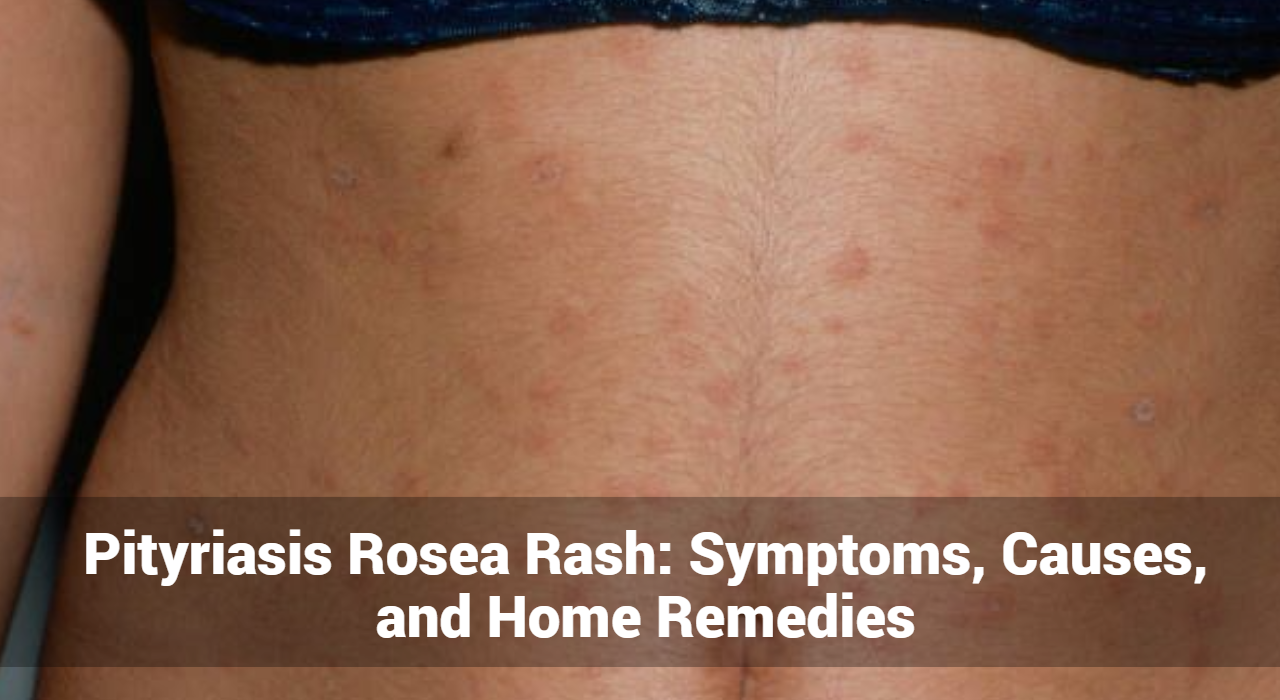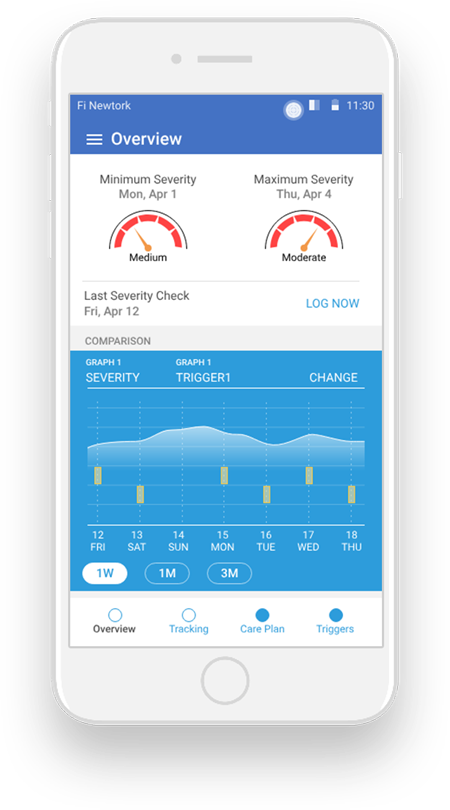Pityriasis Rosea Rash: Symptoms, Causes, and Home Remedies

Pityriasis rosea rash is a common yet often misunderstood skin condition that primarily affects adolescents and young adults. This guide provides an in-depth look at the symptoms, causes, and treatment options for pityriasis rosea rash to help you better understand and manage this condition.
What is Pityriasis Rosea?
Pityriasis rosea is known for its characteristic rash and generally mild symptoms. The skin condition is self-limiting, meaning it usually resolves on its own within several weeks to a few months. While it’s not serious, understanding its features and management can help those affected cope with the condition more effectively.
Understanding Pityriasis Rosea Rash
Pityriasis rosea rash is characterized by a distinctive and somewhat mysterious appearance on the skin. Although it is generally benign and self-limiting, recognizing the signs and understanding the underlying mechanisms can be crucial for effective management and relief.
What Are The Symptoms of Pityriasis Rosea Rash?
- Herald Patch: The onset of a pityriasis rosea rash often begins with a single, prominent lesion called a herald patch. This patch is typically round or oval, pink to red in color, and can range from 2 to 10 centimeters in diameter. It usually appears on the trunk or back and might be slightly raised or scaly.
- Secondary Rash: Within a week to 10 days of the appearance of the herald patch, smaller secondary patches start to develop. These patches are generally oval and may be pink, red, or light brown. They commonly appear on the torso, back, and upper arms, often following a “Christmas tree” pattern on the back.
- Texture and Appearance: The patches of a pityriasis rosea rash can vary in texture from smooth to scaly. They may become mildly itchy but are not typically painful. The rash can also have a more pronounced appearance when seen under certain lighting conditions.
- Additional Symptoms: While the rash itself is the primary symptom, some individuals may experience mild flu-like symptoms such as a slight fever or headache. However, these symptoms are not always present and can vary in intensity.
Track and Manage your Eczema treatment using a comprehensive Eczema App
Download Eczemaless now
What Causes of Pityriasis Rosea Rash?
The exact cause of pityriasis rosea rash remains unknown, but research suggests it may be linked to viral infections. Some key points about its causes include:
- Viral Infection: Evidence points to the involvement of human herpesvirus 7 (HHV-7) or possibly other strains of herpesvirus. The condition is not directly contagious, meaning it cannot be spread through casual contact.
- Immune System Response: It is believed that the rash may be a response of the immune system to a viral trigger. However, no specific virus has been definitively proven to cause pityriasis rosea.
- Seasonal Factors: Some studies suggest that pityriasis rosea may be more common during certain seasons, potentially indicating a link to seasonal variations in viral infections or environmental factors.
- Genetic Factors: Although less studied, there may be a genetic predisposition that affects susceptibility to the condition, but this has not been firmly established.
How Can You Treat From Pityriasis Rosea Rash?
Pityriasis rosea rash is typically self-limiting, meaning it will resolve on its own within 6 to 8 weeks. Nevertheless, managing symptoms and improving comfort is important for those affected. Here are some treatment options:
- Topical Corticosteroids: Over-the-counter or prescription topical corticosteroid creams can help reduce inflammation and itching. These are usually applied directly to the affected areas.
- Antihistamines: Oral antihistamines can be effective in controlling itching associated with the rash. Non-sedating antihistamines are often preferred to avoid drowsiness.
- Moisturizers: Keeping the skin hydrated can help alleviate dryness and irritation. Use unscented, gentle moisturizers to avoid further skin irritation.
- Soothing Baths: Taking lukewarm baths with colloidal oatmeal or baking soda can provide symptomatic relief. Avoid hot baths, as they can aggravate the rash.
- Avoiding Irritants: Wear loose-fitting, breathable clothing and avoid harsh soaps or skin care products that could irritate the skin. Opt for mild, fragrance-free options.
- Sunlight Exposure: Some individuals find that moderate exposure to sunlight can help improve the appearance of the rash. However, this should be done cautiously to avoid sunburn or exacerbation of the rash.
GET IN CONTROL OF YOUR ECZEMA
Use our AI tool to check the severity of Eczema and keep track of your Eczema progress.
What Are The Pityriasis Rosea Rash Natural Treatment or Home Remedies?
If you’re looking for natural treatments for pityriasis rosea rash, there are several home remedies and lifestyle adjustments that may help alleviate symptoms and support the healing process. While these methods are not a substitute for medical advice, they can be effective in managing mild cases and improving comfort. Here’s natural treatments for pityriasis rosea rash:
1. Moisturizing
- Purpose: Keeping the skin hydrated can help reduce dryness and irritation.
- How-To: Apply unscented, hypoallergenic moisturizers or emollients to affected areas several times a day. Products containing ingredients like ceramides or hyaluronic acid are beneficial.
2. Soothing Baths
- Purpose: Baths can help soothe itching and reduce inflammation.
- How-To:
- Colloidal Oatmeal: Add colloidal oatmeal to a lukewarm bath. This can help calm itching and soothe the skin.
- Baking Soda: A bath with a cup of baking soda can also help alleviate itching.
- Epsom Salt: Adding Epsom salts to a bath may provide soothing relief.
3. Aloe Vera
- Purpose: Aloe vera has anti-inflammatory and moisturizing properties that can help reduce itching and irritation.
- How-To: Apply pure aloe vera gel directly to the affected areas. Ensure it is free from added fragrances or alcohol.
4. Coconut Oil
- Purpose: Coconut oil is known for its moisturizing and anti-inflammatory properties.
- How-To: Gently apply virgin coconut oil to the rash to help hydrate the skin and reduce irritation.
5. Apple Cider Vinegar
- Purpose: Apple cider vinegar has antibacterial properties and may help with itching.
- How-To: Dilute apple cider vinegar with water (about one part vinegar to three parts water) and apply it to the rash with a cotton ball. Avoid using undiluted vinegar, as it may irritate the skin.
6. Tea Tree Oil
- Purpose: Tea tree oil has antiseptic and anti-inflammatory properties that may help with itching and reduce inflammation.
- How-To: Dilute tea tree oil with a carrier oil (such as coconut oil or jojoba oil) before applying it to the rash. A common dilution is 1-2 drops of tea tree oil per tablespoon of carrier oil.
7. Honey
- Purpose: Honey has natural antibacterial and moisturizing properties.
- How-To: Apply a thin layer of raw honey to the affected areas. Leave it on for about 15-20 minutes before rinsing off with lukewarm water.
8. Avoid Irritants
- Purpose: Reducing exposure to potential irritants can help prevent exacerbation of the rash.
- How-To: Wear loose, breathable clothing made from natural fibers like cotton. Avoid harsh soaps, detergents, and other products with fragrances or dyes that may irritate the skin.
9. Dietary Considerations
- Purpose: While diet alone may not directly impact pityriasis rosea, a healthy diet can support overall skin health and immune function.
- How-To: Incorporate anti-inflammatory foods such as fruits, vegetables, nuts, and fish rich in omega-3 fatty acids. Drink plenty of water to keep your skin hydrated.
10. Stress Management
- Purpose: Stress may exacerbate skin conditions.
- How-To: Engage in relaxation techniques such as meditation, deep breathing exercises, or yoga to manage stress levels.
11. Sunlight Exposure
- Purpose: Moderate exposure to sunlight may improve the appearance of the rash for some individuals.
- How-To: Spend short periods of time in the sun, preferably in the early morning or late afternoon. Always use sunscreen to protect the skin from sunburn.
When to Seek Medical Advice
While pityriasis rosea rash is generally benign, there are instances when consulting a dermatologist or healthcare provider is advisable:
- Severe Symptoms: If the rash is severe, widespread, or significantly affects your quality of life, seek medical advice for potential treatments or alternative diagnoses.
- Persistent Rash: If the rash does not improve or persists beyond 8 weeks, it is essential to consult a healthcare professional to rule out other conditions that may mimic pityriasis rosea.
- Associated Symptoms: If you experience additional symptoms such as significant fever, persistent headaches, or unusual fatigue, a medical evaluation is necessary to determine if there is an underlying condition requiring attention.
Conclusion
Managing a pityriasis rosea rash involves recognizing its distinctive symptoms, being aware of its potential viral causes, and implementing effective treatment strategies. Although the rash typically resolves on its own, proper symptom management can help alleviate discomfort and ensure a smoother recovery process. If you have concerns about your rash or experience unusual symptoms, consulting a healthcare provider can provide clarity and ensure appropriate care.
Track and Manage your Eczema treatment using a comprehensive Eczema App
Download Eczemaless now



